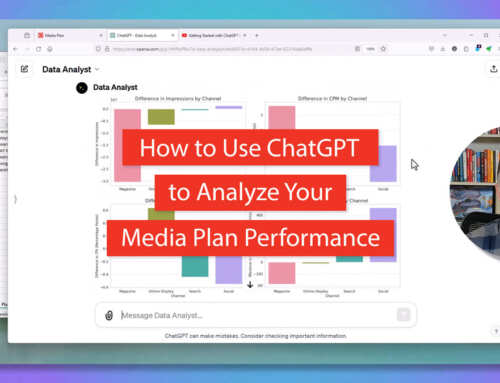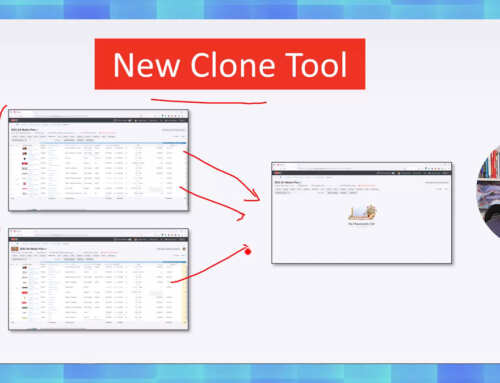Are you tracking the most important marketing KPIs? In their “Media KPIs That Matter” report, the ANA revealed many are using the wrong KPIs in media buying.
The ANA’s Media KPIs That Matter Report
In January and February 2021, The CMO Growth Council of the Association of National Advertisers (ANA) surveyed members of the ANA Media Leadership and Digital & Social Media Committees. The goal of the was to better understand:
Ninety-three (93) people responded to the survey. The quantitative survey was followed by qualitative interviews conducted by the Advertising Research Foundation (ARF) and Media Rating Council (MRC).
In May 2021, the ANA published the results in their “Media KPIs That Matter” report. Here are the key takeaways.
The 12 Most Important KPIs for Media
The ANA survey asked advertisers to rate the importance of 39 media KPIs. The specific question asked was, “Which KPIs are most important to you for media? Rank on a 5-point scale, with 1=least important and 5=most important.”
The table below show which KPIs most frequently scored a perfect “5=most important” in the survey.
You will notice that five of the top six most important media KPIs measure business outcomes. None of the twelve most important media KPIs measure efficiency. None of the top six measure exposure. Only two of the top twelve measure exposure.
The Gap Between Most Important vs. Most Used Media KPIs
The key finding from this ANA report is the most important KPIs are not the most used KPIs. Why is this the case? It’s clearly in the best interest of advertisers to measure the most important media KPIs. So why are other media KPIs the most used?
In the report, Scott McDonald, Ph.D., president of and CEO at the Advertising Research Foundation, provides his perspective:
“Clearly, folks are using the KPIs that they can construct from available data, even if their ideal wish list differs somewhat. The highest value KPIs are those that help them run more efficient and impactful campaigns, so there’s a premium on outcome measures. There is apparently demand for measures of quality (e.g., brand safety, customer lifetime value) that are seen as important, but not widely in use. In the meantime, everyone is making do with exposure KPIs that are available, but viewed as less desirable (reach, site visits, impressions, viewable impressions, etc.).”
It seems the main reason advertisers and agencies are not measuring the most important Media KPIs is a matter of convenience. It’s easier to measure exposure and efficiency. It’s hard to measure business outcomes.
Unfortunately, many advertisers rely on spreadsheets and antiquated media buying systems that cannot track the most important media KPIs. You need the right media planning software to streamline the process of measuring the most important media KPIs.
Bionic is Bridging the Media KPI Gap
Scott McDonald also noted in the ANA report,
“It would seem that there is opportunity for companies that can address this [media KPI measurement] gap.”
Yes, indeed. Bionic has made significant R&D investments to build new software to bridge this gap.
Bionic media planning software now enables you to track all the most important media KPIs all in one place.
Bionic enables you to media plan and track all the most important media KPIs including ROI/ROAS, Brand Safety, Customer Lifetime Value, Conversions and Sales, Unique Reach, and dozens of other media KPIs.
Track ROI and ROAS with Bionic
The ANA report identified ROI/ROAS as the 1st and 2nd most important media KPIs. Unfortunately, most media planning and buying software cannot track ROI nor ROAS.
In advertising, ROAS – or Return on Ad Spend – is used to track short term returns based on the immediate value or attributable conversions. Oftentimes, ROAS is based on sales. ROI – or Return on Investment – is used to track long-term results based on Lifetime Value (LTV).
Bionic is the only software that enables you to estimate ROAS and ROI while media planning. Bionic helps you make better media investment decisions before you spend the money.
Bionic brings more accountability to media investments because it enables you to “call your shots” by setting ROAS and ROI goals. Bionic collects performance data when your ads are running. Bionic constantly reports on variance of actuals versus plan through pacing reports.
Track Brand Safety with Bionic
The ANA report identified Brand Safety Metrics as the 3rd most important media KPI. While it does not track brand safety metrics directly, Bionic can bring your brand safety metrics into your media analytics for greater accountability.
Bionic integrates with popular brand safety systems to gather brand safety data and report it along with your other media KPIs. In particular, Bionic will gather the count of brand safe impressions on every placement. This enables you to compare to the overall number of impressions and to know which placements, vehicles, and vendors bring you the highest brand safety.
Track Customer Lifetime Value with Bionic
The ANA Report ranked Customer Lifetime Value (CLV) as the 4th most important media KPI. We can’t help you to develop your customer lifetime value model – that’s a big project, often involving specialized consultants. However, Bionic can activate your CLV model into your media team’s daily workflow.
Bionic is the only media software that enables you to integrate your customer lifetime value model into media planning and media investment tracking.
While media planning, Bionic enables you to estimate the net present value of cumulative customer lifetime value. Bionic also estimates customer lifetime value created based on your actual performance data.
Track Conversions and Sales with Bionic
The ANA report ranks Conversions and Sales as the 5th and 6th most important media KPIs. Bionic is the only media software that estimates and tracks pacing of conversions.
Bionic enables you to estimate conversions while media planning. You simply enter your budget and Bionic will do all the math to estimate your conversion goals based on your efficiency and conversion benchmarks.
Bionic adds accountability to your media investments by pulling conversion data from all your platforms and reporting on variance and pacing relative to your goals.
Estimate Unique Reach with Bionic
The ANA report ranks Unique Reach as the 7th most important media KPI. While we do not track the unique number of people reached by your ads, Bionic gives you tools to estimate cumulative reach while media planning.
Track All Your Media KPIs with Bionic
Bionic is unmatched in its ability to track media KPIs. No other media software enables you to track the most important media KPIs.
The ANA report identifies 39 media KPIs that matter. Bionic goes well beyond this set and enables you to track more than 80 media KPIs in the system.
If you’re already using Bionic, you already have access to this KPI tracking capability. No additional purchase is necessary. Contact our support team for assistance in setting up and using the KPI tracking capabilities.
If you’re not yet using Bionic, you can request a 14-day trial of Bionic for Agencies or Bionic for Advertisers software through our website.











